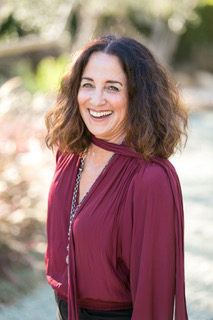Traditional holidays typically elicit memories of our childhoods. For some people, these are joyous moments, and for others they might elicit turbulent ones. Although for some, the inner child might be a place of suffering, for others it can be a source of strength. In either case, it’s an interesting exercise to step back in time and focus on a few of your happiest childhood moments as a way to practice self-care.
Perhaps your most memorable early memory has to do with giving and receiving gifts during the holidays, visiting relatives or friends, watching festive movies, driving around your neighborhood looking at the magnificent holiday lights, or engaging in some other ritual that made you feel joyful.
Being in touch with your inner child is a safe way to take a break from everything that’s going on in the world. The inner child thinks positively and believes in the possibilities in everything. If you put yourself in “child mode,” you may find that you become more open to the magnificent opportunities that exist all around you.
It’s also important to be grateful for your inner child. Spiritual leader Thich Nhat Hanh in his book, Reconciliation: Healing the Inner Child suggests breathing in and saying, “I go back to my inner child”; and breathing out and saying, “I take care of my inner child.” You can take care of your inner child by writing down some dialogue from your inner child’s point of view. And if your inner child houses painful memories, you might want to give a voice to that pain or discomfort. Acknowledging your inner child means treating him/her with respect and love. You can do so by saying, “I love you,” “I hear you,” and “Thank you for being you.” In my book Writing for Bliss, I also discuss the idea that if there is a painful inner child, there are also seeds for transformation, understanding, awakening, and healing.
Some studies have shown that we have a lot to learn from babies and children about tapping into our inner child. For example, these young ones are open to new ideas and novel ways of knowing and learning. Adults, on the other hand, tend to grow more rigid as they get older. It’s wise to foster what Buddhists call Shoshin or “The Beginner’s Mind,” which refers to maintaining an open, eager attitude toward learning and new experiences, without holding any preconceptions.
In fact, one of the blessings of raising children is that you get to live the world through their eyes of wonder. For example, consider going to the supermarket by yourself in contrast to going with a child. It will be a much slower shopping experience with children because of their sense of wonder and curiosity. If all of us just stopped to see with a child’s eyes, we might find that we also feel more joyful on a daily basis. Kids are figuring out everything during the course of the day. They have a heightened sense of awareness that allows them to pick up things we might miss, and, interestingly, this heightened sense might lead us to believe that they’re smarter than we think. My late father-in-law used to say that his children were smart until they went to school. They were open to new horizons of every kind until their sense of wonder was squashed as their teachers tried to fit everybody into the same mold. We also need to remember that the formative years up to age five are key because children learn more in that time frame than they ever will again.
A qualitative study conducted by Sjöblom, Ohrling, and Kostenius (2018) found that childhood experiences can teach us life lessons that help us adapt to situations across our lifespans, which characterizes the essence of the inner child.
Here are some 10 ways to help you tap into your inner child and regain that sense of wonder:
- Keep an open mind.
- Spend time with children.
- Look at old photos to bring back memories of your childhood.
- Spend time doing what you truly enjoy.
- Be playful.
- Engage in laughter.
- Write a letter to your inner child.
- Engage in creative play.
- Journal about special moments from your childhood.
- Engage in meditation and creative visualization.
References
Hanh, T. N. (2006). Reconciliation: Healing the Inner Child. Berkeley, CA: Parallax Press.
Novotney, A. (2011). “Awakening the Inner Child.” American Psychological Association. Vol. 42, no. 1. p. 34.
Sjöblom, M., K. Ohrling, and C. Kostenius (2018) “Useful life lessons for health and well- being: adults’ reflections of childhood experiences illuminate the phenomenon of the inner child.” International Journal of Qualitative Studies on Health and Well-Being. Vol. 13, issue 1. pp. 1–9.


